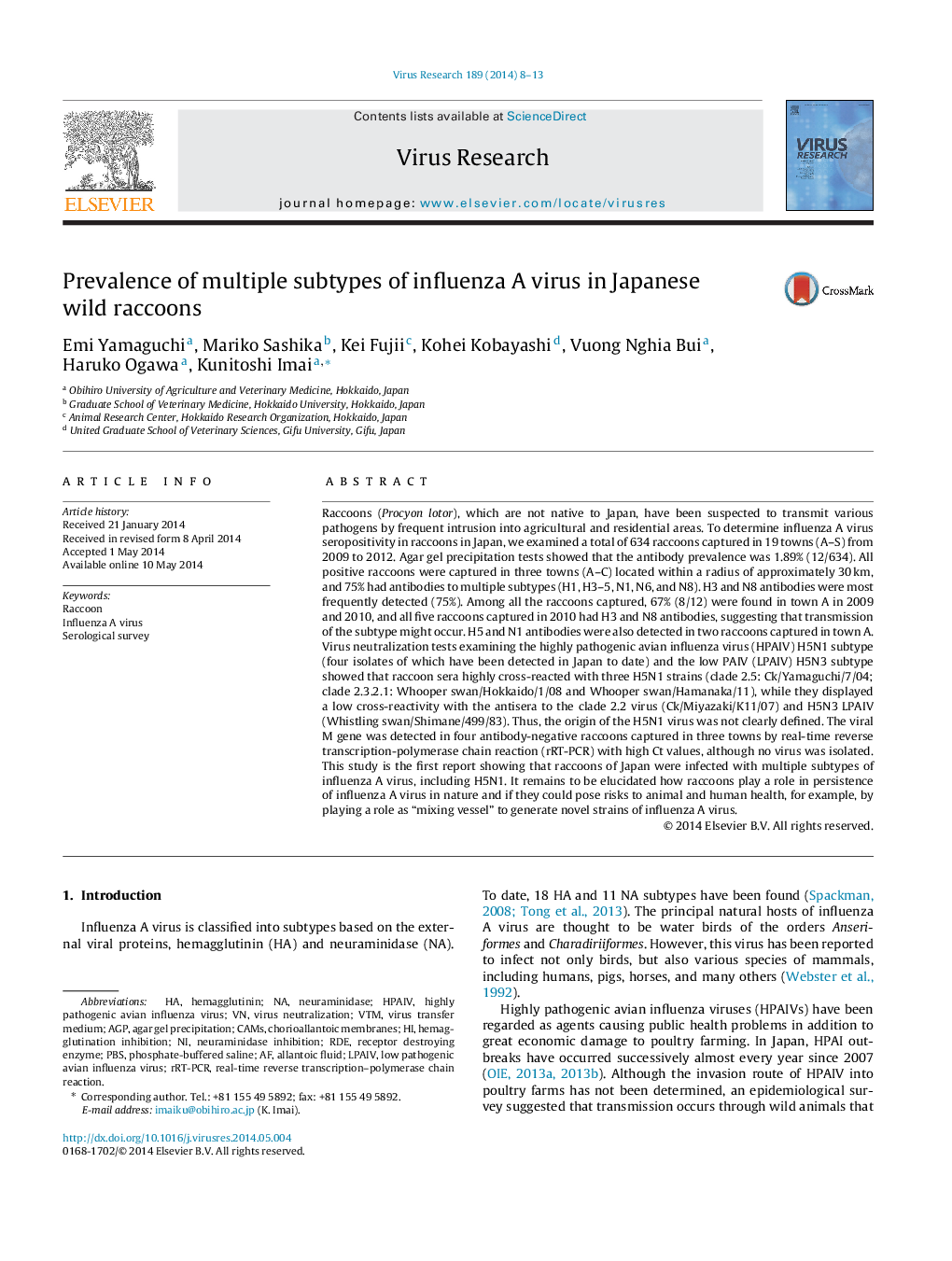| کد مقاله | کد نشریه | سال انتشار | مقاله انگلیسی | نسخه تمام متن |
|---|---|---|---|---|
| 6142469 | 1594368 | 2014 | 6 صفحه PDF | دانلود رایگان |

- Influenza A virus antibody was found in raccoons captured in 3/19 towns in 2009-2012.
- Agar gel precipitation tests showed that 12/634 raccoons were seropositive.
- Most antibody-positive raccoons had antibodies to more than one virus subtype.
- H3N8 antibodies were most frequently found. Two raccoons had H5N1 antibodies.
Raccoons (Procyon lotor), which are not native to Japan, have been suspected to transmit various pathogens by frequent intrusion into agricultural and residential areas. To determine influenza A virus seropositivity in raccoons in Japan, we examined a total of 634 raccoons captured in 19 towns (A-S) from 2009 to 2012. Agar gel precipitation tests showed that the antibody prevalence was 1.89% (12/634). All positive raccoons were captured in three towns (A-C) located within a radius of approximately 30Â km, and 75% had antibodies to multiple subtypes (H1, H3-5, N1, N6, and N8). H3 and N8 antibodies were most frequently detected (75%). Among all the raccoons captured, 67% (8/12) were found in town A in 2009 and 2010, and all five raccoons captured in 2010 had H3 and N8 antibodies, suggesting that transmission of the subtype might occur. H5 and N1 antibodies were also detected in two raccoons captured in town A. Virus neutralization tests examining the highly pathogenic avian influenza virus (HPAIV) H5N1 subtype (four isolates of which have been detected in Japan to date) and the low PAIV (LPAIV) H5N3 subtype showed that raccoon sera highly cross-reacted with three H5N1 strains (clade 2.5: Ck/Yamaguchi/7/04; clade 2.3.2.1: Whooper swan/Hokkaido/1/08 and Whooper swan/Hamanaka/11), while they displayed a low cross-reactivity with the antisera to the clade 2.2 virus (Ck/Miyazaki/K11/07) and H5N3 LPAIV (Whistling swan/Shimane/499/83). Thus, the origin of the H5N1 virus was not clearly defined. The viral M gene was detected in four antibody-negative raccoons captured in three towns by real-time reverse transcription-polymerase chain reaction (rRT-PCR) with high Ct values, although no virus was isolated. This study is the first report showing that raccoons of Japan were infected with multiple subtypes of influenza A virus, including H5N1. It remains to be elucidated how raccoons play a role in persistence of influenza A virus in nature and if they could pose risks to animal and human health, for example, by playing a role as “mixing vessel” to generate novel strains of influenza A virus.
Journal: Virus Research - Volume 189, 30 August 2014, Pages 8-13